“My Painting Process is Unruly:” Sixten Sandra Österberg
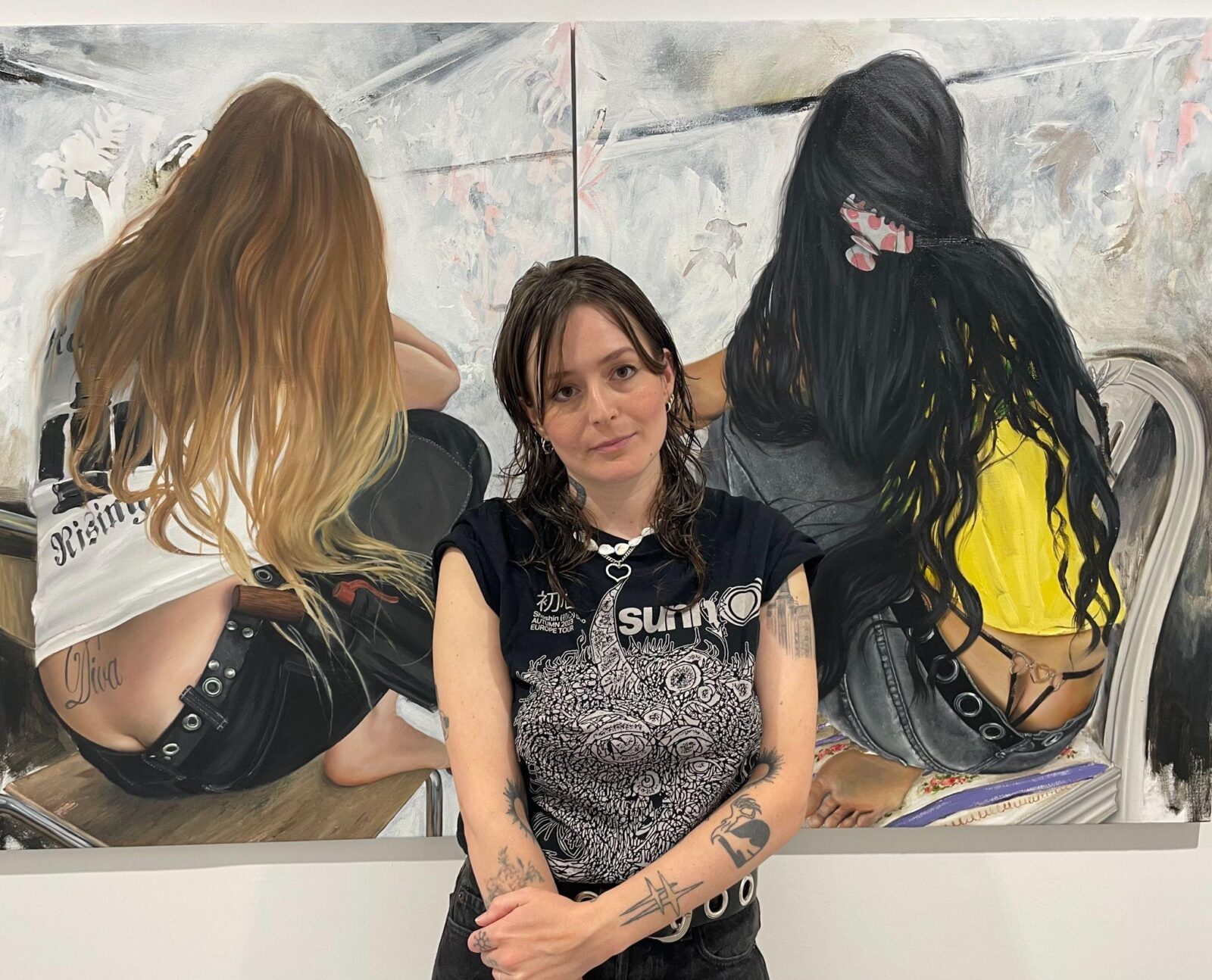
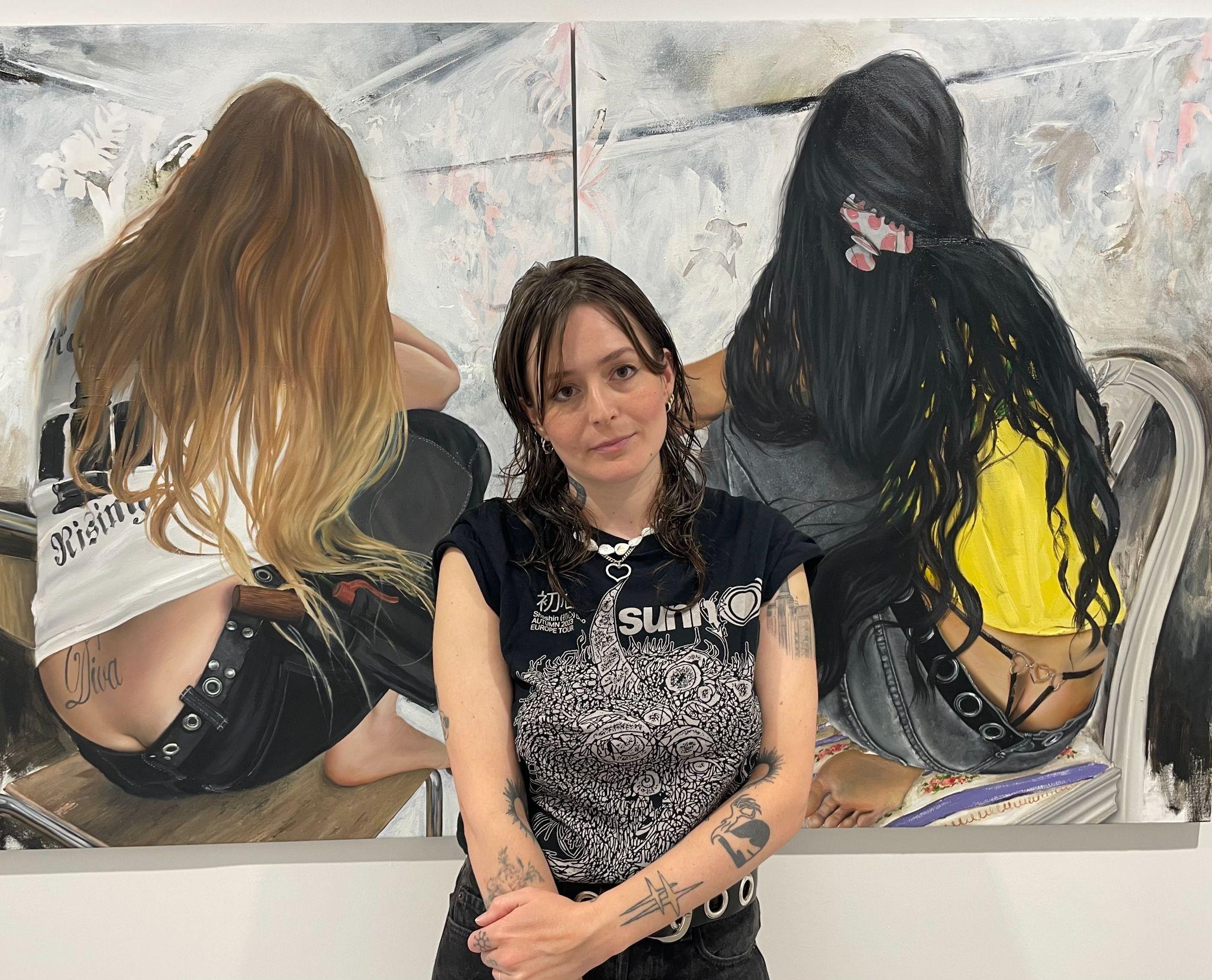
I first met Sixten Sandra Österberg at an afterparty organized by her European gallery Andréhn-Schiptjenko; she was on her way to New York, where she was going to live and work in preparation for Familiar Openings, her first solo show at U.S.-based Company, a queer gallery on the Lower East Side. She had a metal head vibe, but was also innocent and open—something that is also a hallmark of her work that is centered around the redefinition of bodies and beautifully captures an erasure of boundaries. Her large-scale oil paintings mostly feature friends as models, melding queer and other subcultures and art history in subversive, romantic, and thoughtful compositions.
Maybe we should start looking at relationships between galleries and artists through a queer lens? Communal and supportive. Recently, the conversation in art market circles has been centered on closures of a handful of major galleries; so it is refreshing to hear the realities of gallerists working together, or side by side: “Our main goal is to build an artist’s career, and for that you need to be a good group. Together we are stronger, it’s a simple as that,” Marina Schiptjenko wrote to Cultbytes en route from Copenhagen’s art fair Chart, where the gallery also exhibited Österberg. Marking the artist’s second solo show with the Swedish gallery Andréhn-Schiptjenko, they will be showing Österberg at their Paris outpost. International price levels are higher than in Sweden in general, so when Swedish artists show with U.S. galleries, an upward price adjustment occurs. “We are very open to co-representing and sharing artists as long as it is done with respect and with transparency,” Schiptjenko continues.
Andréhn-Schiptjenko started working directly with U.S. artists Tony Matelli, Brad Kahlhamer, and Marilyn Minter early on in their careers and saw the artists begin to work with other galleries simultaneously. “We think everyone benefits from it, and when it works, it is really rewarding,” she continues. They co-represent Österberg and Swedish artist Cajsa von Zeipel with Company Gallery.
We caught up with Österberg in conjunction with her latest solo show FLOOD.
Paris, congratulations. This will be your first solo show at Andréhn-Schiptjenko’s Paris outpost. I love Paris. What are your feelings about the city? Are you there already?
Thank you. I rolled into Paris by train from Stockholm a couple days ago and I love this city. Every time I’m here, I’m like: “What am I doing in Stockholm?” Haha. It’s always wild to finally see your paintings in the gallery after only seeing them in the studio for a long time.
You will be showing eleven new works in a show titled FLOOD, where the press release promises work inspired by “grand compositions of the Pre-Raphaelites and the Victorian movements, with a particular interest in their depiction of long hair.” Cool. Why hair?
In the last few years of my process as a painter, I have been increasingly interested in textiles, and that made me think of hair as a garment and as identity, something that clothes you. Also, since I was a teen, I have been intrigued by the Pre-Raphaelites, who used long hair as a symbol of wealth and femininity. Against that background, I wanted to explore other ways of seeing long hair that are drawn from other social contexts and inspired by subcultures with completely different values.
What works in the Pre-Raphaelite and Victorian styles draw you in, and why?
There is an air of the sublime to the Pre-Raphaelites. Their paintings are otherworldly and very tender at the same time. One of my favorites is Edward Hughes’s The Princess out of School. It has a feeling of storytelling, which is something that I, and I think many others, are attracted to in the Pre-Raphaelites.
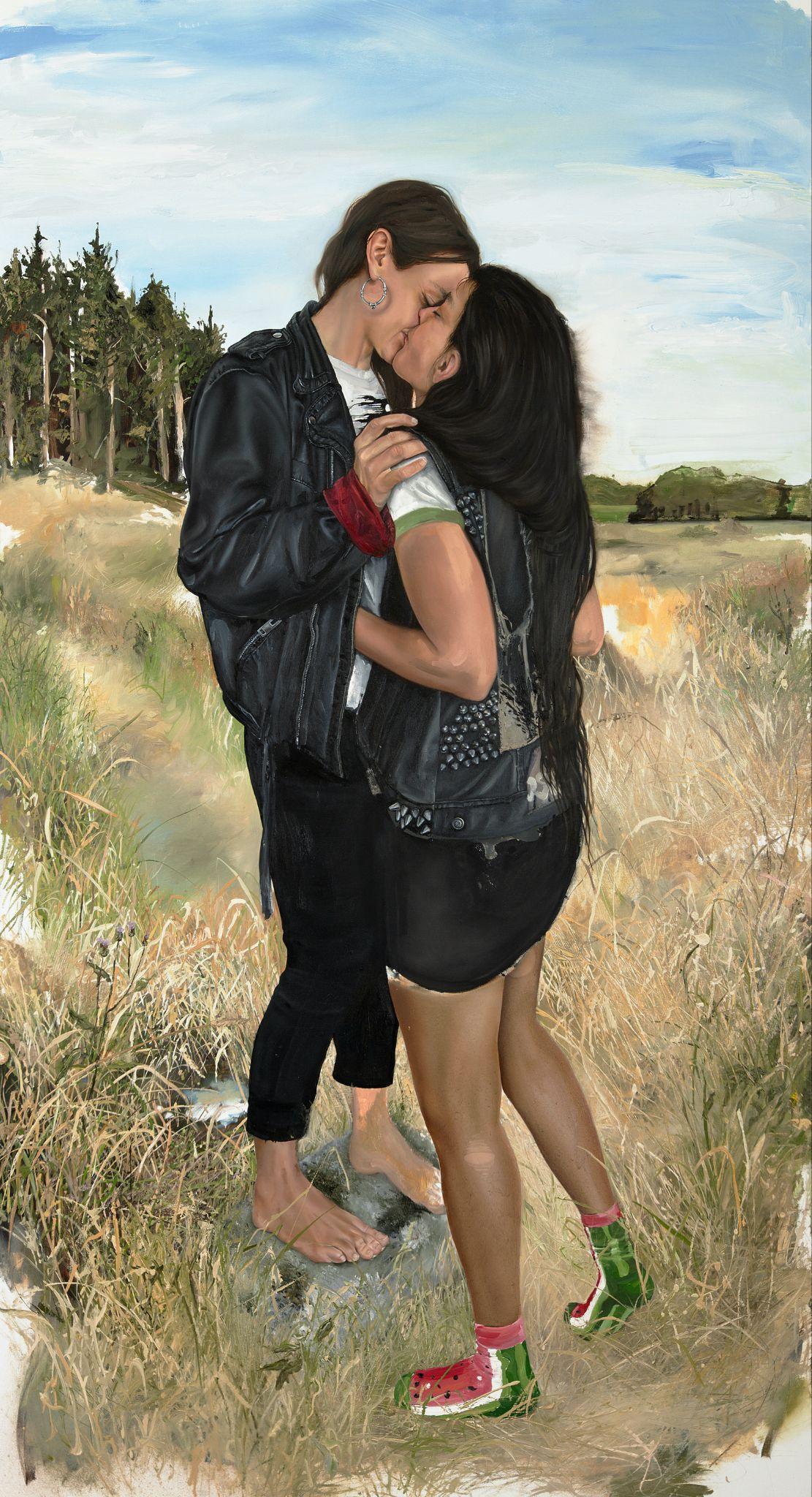
I really love your work, The Kiss. Here, the earring dialogues so well with the ornamentation and patterns in Gustav Klimt’s work. Have you seen Julian McKay and Madison C. Young’s pas de deux in front of Klimt’s work at the Belvedere Museum in Vienna? It is unconventional, pared down, but captures the essence and bodily sensations of a kiss splendidly. The renderings are touching and raw. Similar to your piece, where the natural backdrop clashes with the figures, in a way that is at once disorienting but also beautiful. It speaks to a sense of wonder in the human meeting with nature, and two people meeting in a kiss. How did your piece come about?
I hadn’t seen it until you showed it to me—beautiful! I love the Belvedere and spent quite a bit of time there when I lived in Vienna. Although there are similarities between the kisses, the composition is similar to that of Hayez’s The Kiss. I was excited about the idea of hair cascading down someone’s back during a kiss.
Right back at you, I had never seen Hayez’s kiss, it’s gorgeous. My Klimt comparison was off—but the sensation remains. What does your studio look like? And, how do you work with image references and models?
I work almost entirely from photos I take. My process is collage-like, where I bring different photos together as the painting evolves. I don’t see any single photo as anywhere close to my final vision. I’m not interested in “photorealism” as much as I’m interested in what emerges when I paint using photos as a starting point. And, most of the models for my paintings are friends and acquaintances. Some of my friends like modeling for me, so I have recurring photo seshes with them so I don’t have to bother anyone else.
Tell me more about your painting process.
I do a lot of quick sketching where I have to be fast to capture ideas because they can easily disappear as quickly as they appear. I have a wall of drawings in my studio, almost like a huge mind map. But I’m seldom faithful to the original idea, instead letting the painting live its own life. During the process, I might decide to swap out, say, a person’s hair color, a piece of clothing, or a piece to furniture. The projector is a great tool that lets me project images onto the canvas to see what works and what doesn’t before I paint it.
My painting process is unruly; I think I am going to do one thing, but I end up with something totally unexpected.
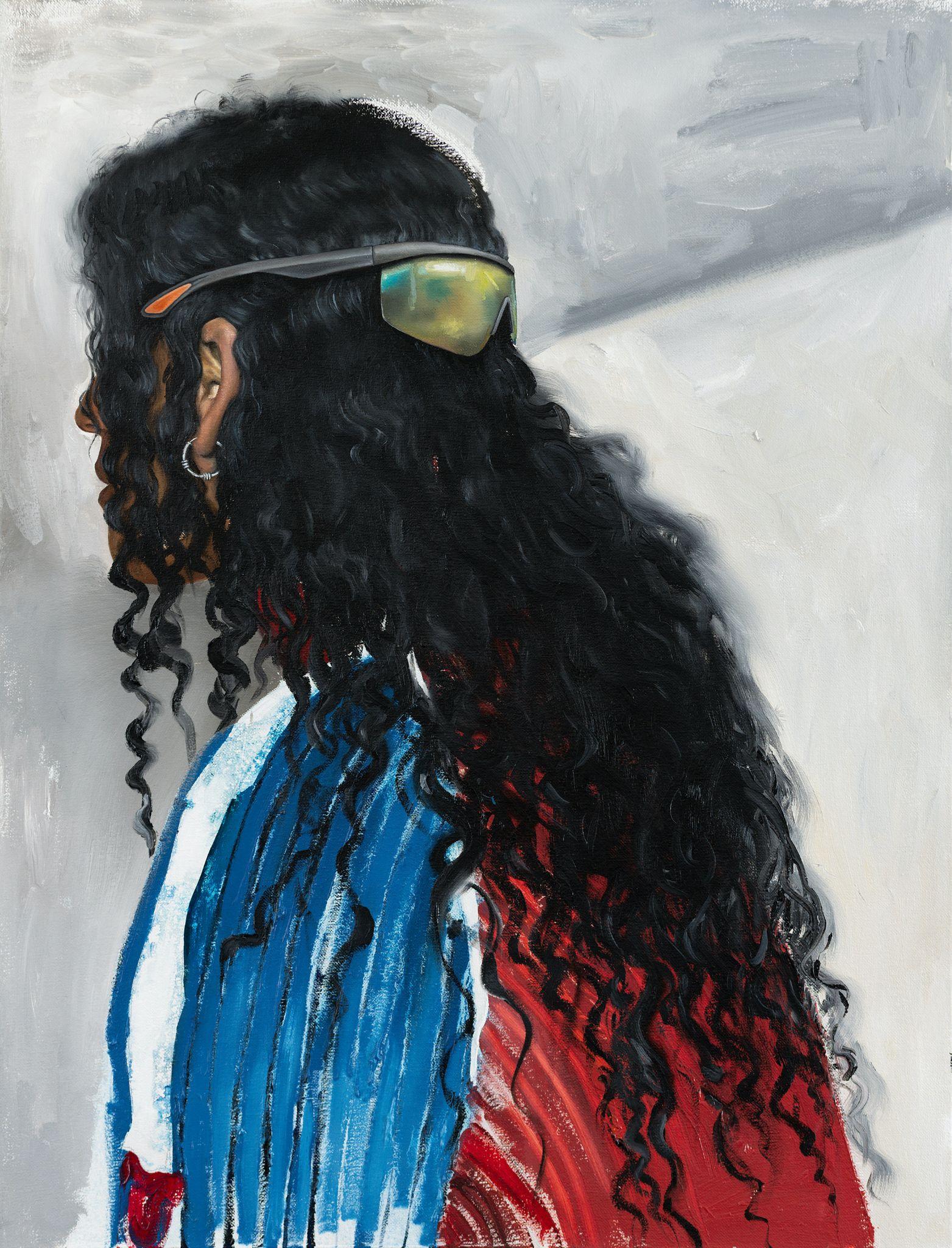
In a 2021 interview in Artworks, you spoke about your interest in collective forms of work, living, and perhaps art-making. Have your ideas around collectivity continued to develop, and if so, how?
I lived in a collective house with my friends for the last two years. We shared everything and lived together as a family. Unfortunately, we recently had to move out of the house, but in the future, I hope to be able to build something more long-term around a collectively owned home. Of course, collective living is political to me, but it’s also a great contrast to the solitary life in the studio. Unlike most forms of creating, painting really tends to be a one-person job.
I spend most of my time at the studio, it’s practically a second home. Located in a business district, it’s a funny place to find oneself, completely dead during the weekends. I moved there about a year ago, and I’m very happy to have artist colleagues next door, who I share the space with.
Do you still play in a band?
I wish I did. I quit my previous band for a lack of time, but I have noticed that painting and music draw from the same creative well. I hope and intend to be able to strike a better balance between them in the future.
The music critic Robert Christgau never cared much for heavy metal. In a 1988 review of the film The Decline of Western Civilization—The Metal Years about Ozzy Osbourne and Gene Simmons, among others, he even disparages its fans, calling them hardly people: “Eighty per cent of the ‘people’ who like it are male, and 98 per cent of them are white.” Even though this is an obscure and dated reference, heavy metal has indeed been seen as male-dominated, rife with misogyny. But, being so popular, the fanbase is certainly more diverse—you like it and even play it. On your Instagram account, you have added “Heavy Metal Queer” as a descriptor; it is subversive but also, obviously, simple in that it names something that certainly exists. Can you speak more about your relationship to heavy metal?
I have such great love for heavy metal. I feel blessed for it, like being chosen by something strong and vibrant. I cannot not like it. I think that is a feeling many metalheads can relate to. I guess Robert Christgau just wasn’t chosen! Jokes aside, he is absolutely right that metal is dominated by white males, and sexism, queerphobia and racism are huge problems in metal. But as you say, the scene is more diverse than many assume, and many in metal fight for change. The state of things in metal pisses me off, but I feel immense gratitude and hope for those of us who represent something else, and we are actually a significant portion of the metal scene. My friends in Vienna will host a three-day festival this November called Loud and Proud, which is a queer/lesbian feminist initiative to highlight and bring together heavy metal queers and allies.
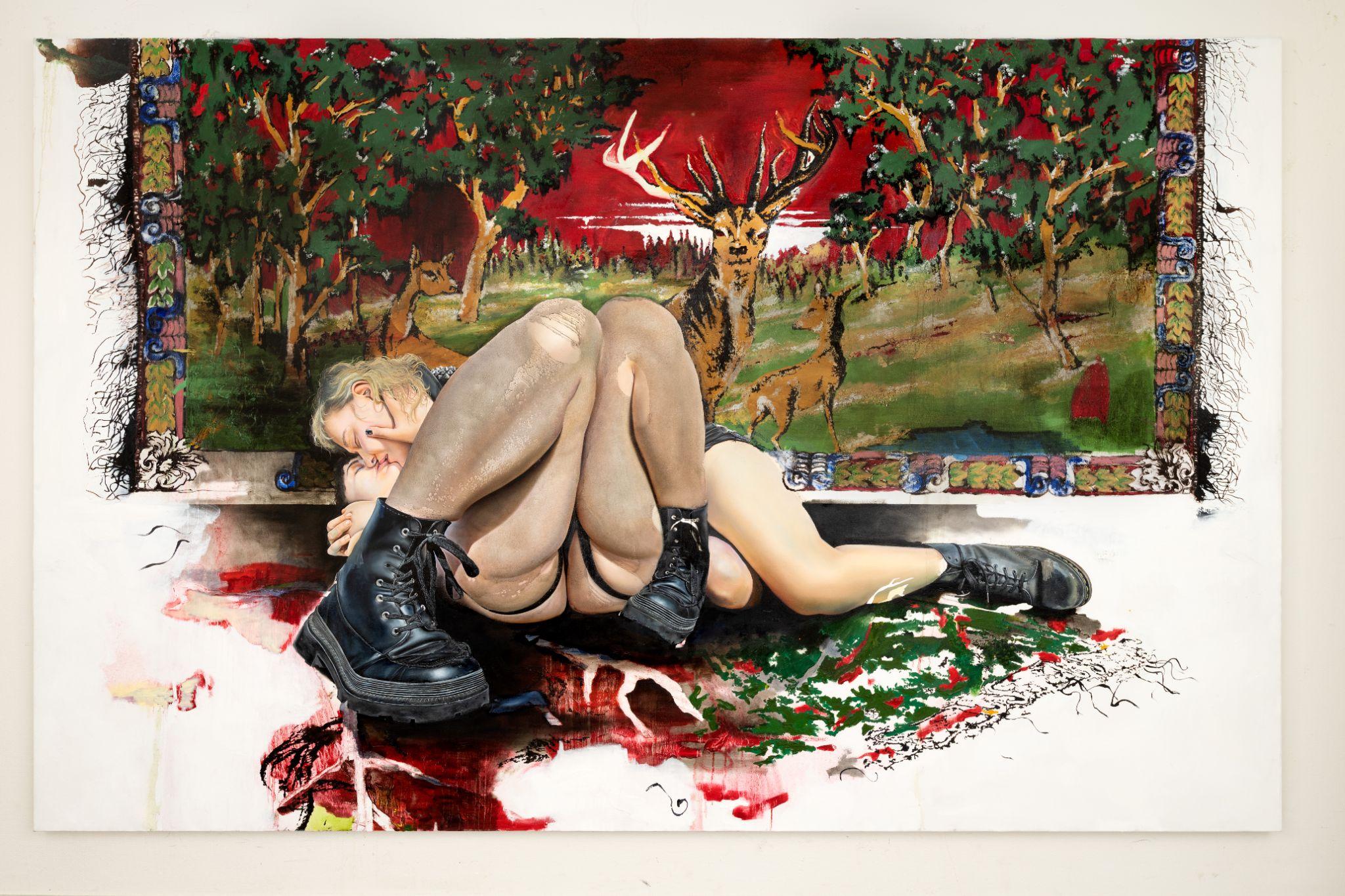
Sandra Sixten Österberg. “Sleepers,” 2024. Oil on canvas, 82.75 x 130 in (210.2 x 330.2 cm). Courtesy of the artist.
I really liked Sleepers at your solo show at Company; the blood stains grabbed my attention. Since your work is so invested in art history. Could you share one of your core museum memories?
It makes me so happy to hear that you liked Sleepers, it’s very special and dear to me. As for cherished museum memories: last year, when I saw the second Island of the Dead painting by Arnold Böcklin, at the Met in New York, I cried like a baby. It was really moving. While in Paris, I am excited to go to the Musée d’Orsay where I actually have not been before; they have some fantastic Gustave Courbet works in their collection that I cannot wait to finally see.
Sixten Sandra Österberg FLOOD is on view from September 6 through October 11, 2025 at Andréhn-Schiptjenko Paris, 56 Rue Chapon, 75003 Paris, France.
You Might Also Like
What's Your Reaction?
Anna Mikaela Ekstrand is editor-in-chief and founder of Cultbytes. She mediates art through writing, curating, and lecturing. Her latest books are Assuming Asymmetries: Conversations on Curating Public Art Projects of the 1980s and 1990s and Curating Beyond the Mainstream. Send your inquiries, tips, and pitches to info@cultbytes.com.

